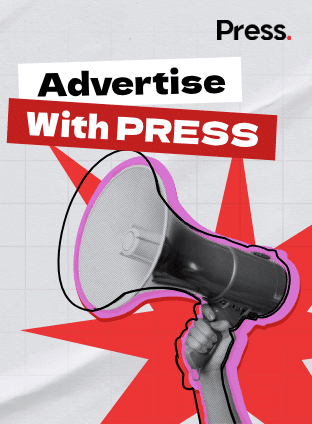Key Takeaways
- Tangible assets are physical items like buildings or machinery, while intangible assets are non-physical items such as software, patents, and brand goodwill.
- Tangible assets depreciate, while intangible assets amortise according to useful life under MFRS 116 and MFRS 138.
- Both asset types appear on a company’s balance sheet but differ in valuation, lifespan, and liquidity.
- Modern Malaysian businesses now derive over 60% of value from intangible assets, including digital systems and brand equity.
- A balanced approach to both tangible and intangible asset management strengthens financing opportunities and audit transparency.
Table of Contents
ToggleWhat Are Tangible and Intangible Assets?
Tangible assets are physical items you can touch or see while intangible assets are invisible but hold measurable economic value.
In accounting, both fall under the umbrella of non-current assets when they generate benefits beyond one financial year. However, their composition, measurement, and treatment differ significantly.
| Aspect | Tangible Assets | Intangible Assets |
| Nature | Physical, measurable | Non-physical, identifiable |
| Examples | Buildings, equipment, vehicles | Software, trademarks, goodwill |
| Measurement | Purchase cost minus depreciation | Acquisition or development cost minus amortisation |
| Lifespan | Limited (wear and tear) | Often longer or indefinite |
| Regulation | MFRS 116: Property, Plant & Equipment | MFRS 138: Intangible Assets |
In simple terms:
- Tangible assets represent what your business owns physically.
- Intangible assets represent what your business knows, builds, or is recognised for.
For a deeper understanding of intangible asset, check out our full article: Details of Intangible Assets in Business (2025 Guide).
Examples of Tangible Assets in Business
Tangible assets provide operational support and production capacity.
They are critical for manufacturing, logistics, and retail-based businesses where physical infrastructure drives output.
1. Property and Buildings
Owned office buildings, warehouses, or retail outlets are recorded as long-term tangible assets. Their value decreases over time through depreciation, reflecting wear and tear.
2. Machinery and Equipment
Items like production machinery, computers, or delivery vehicles help businesses operate daily. They are depreciated over their expected useful life, typically 3–10 years.
3. Furniture and Fixtures
Office furniture, shelving, and fittings are tangible assets with lower value but are essential for operational function.
4. Inventory and Supplies
Although technically current assets, inventory and raw materials are tangible resources that support production and sales.
Example: A food manufacturing company in Johor lists its ovens, mixers, and chillers as tangible assets. Each item depreciates annually based on MFRS 116.
Examples of Intangible Assets in Business
Intangible assets are non-physical resources that build long-term brand and intellectual value.
They are increasingly dominant in service-based and digital industries, from fintech to e-commerce.
1. Software and Digital Systems
Custom-built software, ERPs, and digital tools are recognised as intangible assets when they are identifiable and expected to generate future benefits.
2. Trademarks and Patents
Registered intellectual property like brand names, logos, or product designs qualify as intangible assets and are often renewable indefinitely.
3. Goodwill
Arises when one business acquires another for more than the fair value of its net assets. Represents brand loyalty, customer relationships, and reputation.
4. Franchise Rights or Licences
These contractual rights, such as franchise agreements or government operating licences, carry measurable value and are amortised over their contractual term.
5. Brand Reputation and Customer Data
While unidentifiable under accounting standards unless purchased, these still influence valuation and investor confidence.
Example: A Kuala Lumpur software company develops a proprietary app and secures a patent. Both the software and patent are recorded as intangible assets under MFRS 138.
How Tangible and Intangible Assets Appear on the Balance Sheet
Both types add to total company value, but they’re shown on different lines and measured a bit differently.
| Category | Tangible Assets | Intangible Assets |
| Line Item | Property, Plant & Equipment (PPE) | Intangible Assets |
| Measurement | Usually cost minus accumulated depreciation (plus any impairment) | Cost or fair value minus accumulated amortisation (plus any impairment). A revaluation model is allowed only if there’s an active market for the intangible (rare). |
| Residual Value | May have scrap/resale value | Usually zero (Nil) |
| Revaluation | Allowed under MFRS 116 (PPE) | Limited under MFRS 138 (only if an active market exists) |
Balance Sheet Example:
Company XYZ Sdn Bhd
Statement of Financial Position As at 31 December 2025 (Extract)
| RM | RM | |
| Property, plant and equipment | ||
| Buildings | 1,000,000 | |
| Machinery | 400,000 | |
| Computers | 150,000 | |
| Intangible assets | 1,550,000 | |
| Software development | 300,000 | |
| Trademarks | 200,000 | |
| Total intangible assets | 500,000 | |
| Total non-current assets | 2,050,000 |
Tangible assets: RM1,550,000 → ~75.6% of total
Intangible assets: RM500,000 → ~24.4% of total
Fact: In a full set of financial statements, “Property, plant and equipment” and “Intangible assets” typically appear as single line items on the face of the balance sheet, with the detailed breakdown (buildings, machinery and so on) shown in the accompanying notes.
Depreciation vs Amortisation: The Core Accounting Difference
| Aspect | Depreciation | Amortisation |
| Common Calculation Method | Straight-line, Reducing balance, or Units of production | Straight-line only |
| Straight-Line Formula | (Cost − Residual Value) ÷ Useful Life | Cost ÷ Useful Life |
| Example (Straight-Line) | Machine cost RM50,000, residual RM5,000, 5 years → (50,000 − 5,000) ÷ 5 = RM9,000/year | Software cost RM30,000, 3 years → 30,000 ÷ 3 = RM10,000/year |
| Accounting Entry | Dr Depreciation Expense Cr Accumulated Depreciation | Dr Amortisation Expense Cr Accumulated Amortisation |
| Financial Statement Impact | Income Statement: Depreciation Expense Balance Sheet: Reduces asset carrying value | Income Statement: Amortisation Expense Balance Sheet: Reduces intangible asset value |
Tip: If an intangible has an indefinite useful life (like trademarks, goodwill), it is not able to amortise and must be tested for impairment every year.
Further reading: What Are Assets in Accounting? Understanding, Recording & Impact on Business
Valuation and Impairment Testing
Under MFRS 136 (Impairment of Assets), both tangible and intangible assets require periodic review to ensure carrying value doesn’t exceed recoverable amount.
The Golden Rule (MFRS 136)
- If Carrying > Recoverable, impairment loss occurred.
What is “Recoverable Amount”?
The higher of:
- Fair value less costs of disposal (FVLCD): what you could sell it for today, minus selling costs.
- Value in use (VIU): present value of future cash flows the asset/CGU will generate (discounted).
Common Red-flag Indicators (Quick Mnemonic: “TECH-FIT”)
- Tech leap by competitors
- Earnings miss / negative cash flows
- Changes in law/licence
- Hardware damage/idle capacity
- Forex/commodity shocks
- Internal cost overruns
- Trends: market slide
Journal Entry for Impairment
- Dr Impairment loss (P&L)
- Cr Accumulated impairment – (Asset/CGU)
Future depreciation/amortisation is based on carrying amount over remaining useful life.
Reversals (Important Nuance)
- If reasons for a past impairment no longer exist, you can reverse impairments for most assets (up to the carrying amount as if no impairment had occurred).
- Goodwill impairment cannot be reversed.
Practical Testing Steps (Quick Workflow)
- Screen for indicators.
- If yes (or if goodwill/indefinite): estimate recoverable amount (FVLCD and/or VIU).
- Model VIU: forecast cash flows (post-tax or pre-tax consistently), choose a discount rate reflecting asset/CGU risks, compute present value.
- Compare: carrying vs recoverable.
- Record impairment if needed, update depreciation/amortisation going forward.
- Disclose key assumptions, sensitivities (for material CGUs).
Presentation & Disclosure (What Users Will See)
- Income statement: “Impairment loss” (often within operating results).
- Balance sheet: reduced carrying amounts, accumulated impairment shown in notes.
- Notes: methods, key assumptions (growth, discount rates), and sensitivity to changes.
Which Type of Asset Is More Valuable Today?
In 2025, intangible assets often surpass tangible ones in defining a company’s long-term value.
Digital transformation, brand awareness, and intellectual property now dominate business valuation metrics.
For instance:
- A logistics firm’s trucks (tangible) are crucial for operations.
- But its routing algorithm, customer data, and mobile app (intangible) drive scalability and competitive advantage.
“Modern balance sheets must evolve. A brand’s story, software, and trust now weigh as heavily as its factory or fleet,” says an accounting consultant based in Kuala Lumpur.
However, tangible assets remain vital for collateral, financing, and operational stability. They provide the foundation on which intangible value is built.
Common Mistakes in Managing Tangible and Intangible Assets
Accounting errors often occur when companies fail to distinguish or document assets correctly.
1. Mixing Expense and Capital Costs
Businesses sometimes treat development expenses or equipment purchases as operational costs rather than capital investments.
2. Ignoring Revaluation and Impairment
Failing to adjust for changing market or technology conditions can overstate asset value.
3. Missing Amortisation or Depreciation Schedules
Inconsistent expense recording distorts profit and loss statements.
4. Overlooking Internally Generated Intangibles
Unrecorded software or brand development projects lead to understated balance sheets.
5. Poor Documentation
Lack of ownership records, receipts, or contracts complicates audits and tax filing.
Tax and Audit Considerations
LHDN and auditors review both asset classes for accuracy and compliance.
- Tangible assets: Qualify for capital allowances under the Income Tax Act 1967.
- Intangible assets: Only certain types (software, licences, patents) qualify, goodwill does not.
- Audit focus: Verifying ownership, valuation method, and impairment testing.
Accurate categorisation ensures proper tax deductions and avoids penalties for misstatement during audits.
How to Balance Tangible and Intangible Asset Strategy
A resilient business builds both physical infrastructure and intellectual capital.
- Document Everything: Maintain proper records for each acquisition.
- Reassess Regularly: Conduct annual impairment and valuation reviews.
- Invest in Innovation: Software, IP, and digital assets create scalability.
- Protect Your Brand: Register trademarks with MyIPO and safeguard online reputation.
- Engage Professionals: Accountants and valuers ensure compliance with MFRS and LHDN expectations.
A balanced portfolio of tangible and intangible assets provides operational strength (machinery, property) and future growth (brand, technology).
Conclusion: Understanding the Real Difference Builds Stronger Businesses
Tangible and intangible assets are two halves of the same financial story. One shows what a company owns, the other reveals what it knows, creates, and represents. Recognising both accurately under Malaysian standards enhances transparency, funding eligibility, and investor trust.
Whether your business builds technology, manages brands, or operates factories, managing both asset types strategically determines long-term success.
In today’s economy, tangible assets open doors but intangible assets keep them open.
Turn your brand’s reputation into a measurable business asset.
Work with a trusted digital PR agency in Malaysia that builds your online visibility, brand authority, and long-term customer trust.
Frequently Asked Questions About Tangible vs Intangible Assets
What is the main difference between tangible and intangible assets?
Tangible assets are physical, while intangible assets are non-physical but hold measurable value.
How are tangible and intangible assets recorded in accounting?
Both appear on the balance sheet, tangible assets under PPE, intangible assets under MFRS 138.
Do both asset types depreciate?
Tangible assets depreciate, intangible assets amortise over time.
Which assets are more valuable today?
Intangible assets like software and brands often contribute more to modern business valuation.
Can I claim tax deductions for intangible assets?
Only certain types, like software licences and patents, qualify under LHDN capital allowances.
Why is it important to distinguish between both?
It ensures accurate financial reporting, compliance, and fair business valuation.


